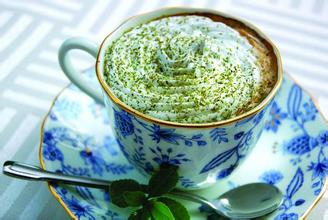Introduction to the Grinding scale of Coffee beans produced in Fenghuang Manor, Costa Rica
Costa Rica Fire Phoenix Manor Coffee Bean Production Area Treatment Variety Grinding Scale Introduction
Excellent Costa Rican coffee is known as "extra hard beans" and can grow at altitudes above 1500 meters. Altitude has always been a problem for coffee growers. The higher the altitude, the better the beans, not only because higher altitudes increase the acidity of the beans and thus enhance the flavor, but also because the lower night temperatures at higher altitudes can slow down the growth of trees and thus enhance the flavor of the beans. In addition, due to the high altitude drop caused by sufficient rainfall, coffee tree growth is very favorable. The negative effect, however, is to increase the additional cost of transportation, which may well make coffee production unprofitable. Costa Rican coffee has adopted new techniques to increase efficiency, including using "electric eyes" to select beans and identify irregular size beans. Tarasu, south of San José, is one of the country's most prized coffee growing areas. La Minita Tarrazu coffee is locally famous but produced in limited quantities, about 72600 kilograms a year, on land called La Minita, owned by nearly three generations of the McAlpine family in Britain. In fact, the land produces more than 450 tons of coffee per year. But Tara Sulama coffee is grown without artificial fertilizers or pesticides, and is harvested and picked entirely by hand, in order to avoid some of the damage done to the beans by the air-jet process
S.H.B. means very hard beans at altitudes above 1500 meters, meaning high-quality Costa Rican coffee. This extra-hard coffee bean suitable for medium and heavy roasts has a strong acidity and attractive aroma. Costa Rican SHG coffee is usually full of particles, clear flavor, bright acid, consistency is also very good, strong flavor makes the ending rhyme in the throat for a long time, unforgettable.
Other coffees worth mentioning are Juan Vinas (PR), H.Tournon, Windmill (SHB), Montebello and Santa Rosa. Fine coffee is grown in Geredia and the Central Valley. Another striking coffee is Sarchi (one of five towns that represent Costa Rica's "coffee route"), which grows on the slopes of Poas Volcano, 53 kilometers from San Jose. Saatchi was founded in 1949 and has 30770 hectares of land to grow sugar cane and coffee. The area is also known for its handicrafts, attracting tourists from all over the world.
Located in the fertile volcanic hills of the Poas Valley in Central Costa Rica, the first producer of honey-treated and sun-cured coffee in Central and South America, the 100% organic coffee plantation believes that organic farming is the best choice for environmental protection and family health, despite many technical and organizational challenges.
The estate pays great attention to the concept of environmentally friendly treatment, such as rainwater harvesting for coffee treatment; the production and use of organic compost using earthworm farming (worm compost) makes the planting process completely free of chemical fertilizers and pesticides. The high quality coffee produced by this estate is very unique, the biggest feature is that it has a very amazing sweetness, 100% organic coffee! He made a name for himself when he entered the boutique coffee contest in 2009.
During the harvest season, the Brixmeter, which is often used in the wine industry, measures the sugar content of the fruit and determines the best time and treatment for harvesting according to the brix sugar content. Only those exceeding 20% sweetness will be exposed to sunlight. The Brix value of ordinary fruits is 14 for apples, 12 for lemons and 18 for passion fruits, but the coffee cherries of Phoenix Manor can reach 21~22.

Important Notice :
前街咖啡 FrontStreet Coffee has moved to new addredd:
FrontStreet Coffee Address: 315,Donghua East Road,GuangZhou
Tel:020 38364473
- Prev

Introduction of Yunnan small Coffee Dou Hua Guoshan planting Environment Price treatment Plant
Yunnan small grain coffee bean flower fruit mountain planting environment price treatment factory introduced Baoshan: Baoshan coffee cultivation began in the mid-1950s, the first coffee seedling was introduced by the late patriotic overseas Chinese Mr. Liang Jinshan in Southeast Asia. The local famous Lujiangba small grain coffee is of excellent quality. It was rated as first class in London, England as early as the late 1950s. In recent years, with the expansion of international trade
- Next

The flavor and taste of Colombian Ramon Starbucks coffee beans introduction to the manor
The flavor and taste of Colombian Ramon Starbucks coffee beans the manor introduces that the suitable climate in Colombia provides a real natural pasture for coffee. Coffee trees in Colombia are mainly cultivated in the Andes, on steep slopes about 1300 meters above sea level, where the annual temperature is about 18 degrees Celsius, annual rainfall is 2000 to 3000 millimeters, and latitude 1-11.
Related
- Detailed explanation of Jadeite planting Land in Panamanian Jadeite Manor introduction to the grading system of Jadeite competitive bidding, Red bid, Green bid and Rose Summer
- Story of Coffee planting in Brenka region of Costa Rica Stonehenge Manor anaerobic heavy honey treatment of flavor mouth
- What's on the barrel of Blue Mountain Coffee beans?
- Can American coffee also pull flowers? How to use hot American style to pull out a good-looking pattern?
- Can you make a cold extract with coffee beans? What is the right proportion for cold-extracted coffee formula?
- Indonesian PWN Gold Mandrine Coffee Origin Features Flavor How to Chong? Mandolin coffee is American.
- A brief introduction to the flavor characteristics of Brazilian yellow bourbon coffee beans
- What is the effect of different water quality on the flavor of cold-extracted coffee? What kind of water is best for brewing coffee?
- Why do you think of Rose Summer whenever you mention Panamanian coffee?
- Introduction to the characteristics of authentic blue mountain coffee bean producing areas? What is the CIB Coffee Authority in Jamaica?

